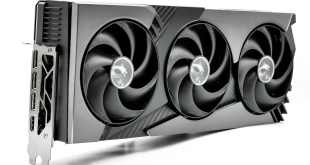Today we slot the Asus R9 290 Direct CU II OC into a series of tests we have ran on other cards. We are using the latest AMD Catalyst 13.11 beta driver and the Nvidia ForceWare 334.67 beta driver.

We are using one of our brand new test rigs supplied by PCSPECIALIST and built to our specifications. If you want to read more about this, or are interested in buying the same Kitguru Test Rig, check out our article with links on this page.

We are featuring results today with an Apple 30 inch Cinema HD Display at 2560×1600 resolution and an Asus PQ321QE Ultra HD 4K screen running at 4K 3840 x 2160 resolution.
Room ambient was held at 23c throughout testing.
Comparison cards:
Gigabyte R9 290 WindForce OC (1,040mhz / 1,250mhz memory)
Asus R9 290X Direct CU II OC (1,050mhz / 1,350mhz memory)
Sapphire R9 290X Tri-X OC (1,040mhz core / 1,300mhz memory)
Gigabyte R9 290X OC WindForce (1,040mhz core / 1,250mhz memory)
AMD R9 290X (1000mhz core / 1,250mhz memory)
AMD R9 290 (947mhz core / 1,250mhz memory)
Palit JetStream GTX780 Ti OC (980mhz core / 1,750mhz memory)
Nvidia GTX780 Ti (876mhz core / 1,750mhz memory)
Nvidia GTX Titan (837mhz core / 1,502mhz memory)
Nvidia GTX780 (863mhz core / 1,502mhz memory)
MSI GTX780 Lightning (980mhz core / 1,502mhz memory)
Sapphire R9 290 Tri-X OC Edition (1000mhz / 1300 mhz memory)
Sapphire R9 280X Toxic Edition (1,150mhz core / 1,600mhz memory)
Palit GTX770 OC (1046mhz core / 1753mhz memory)
Software:
Windows 7 Enterprise 64 bit
Unigine Heaven Benchmark
Unigine Valley Benchmark
3DMark Vantage
3DMark 11
3DMark
Fraps Professional
Steam Client
FurMark
Games:
Sleeping Dogs
Total War: Rome 2
Dirt Showdown
Tomb Raider
Metro Last Light
GRID 2
Splinter Cell Blacklist
Batman Arkham Origins
Battlefield 4
All the latest BIOS updates and drivers are used during testing. We perform generally under real world conditions, meaning KitGuru tests games across five closely matched runs and then average out the results to get an accurate median figure. If we use scripted benchmarks, they are mentioned on the relevant page.
 KitGuru KitGuru.net – Tech News | Hardware News | Hardware Reviews | IOS | Mobile | Gaming | Graphics Cards
KitGuru KitGuru.net – Tech News | Hardware News | Hardware Reviews | IOS | Mobile | Gaming | Graphics Cards



Why would they move the VRM sensor to a place that is going to report hot results? surely thats an engineer foobar?
Sapphire rule the AMD roost, because they always do a proper design – and they don’t make nvidia boards either.
I read this review as ASUS cut corners, and have a cooler which isn’t quite at the same level as their competitors. I love their motherboards, but wonder about some of their design decisions once they move to other products.
So the VRM temp sensor doesn’t actually reflect the VRM’s true temperature.
The Cooler itself doesn’t fully cover the gpu (3 of 5 pipes at best it looked like?)
And they are using poorer quality Elpida memory modules, which are well known to be a source of the black screen crashes on the 290 series cards, over the far more stable Hynix modules that sapphire/gigabyte/msi use?
And all of this comes at a serious price premium (£529.99 on ocuk atm vs £439.99 for the gigabyte and £449.99 for the msi versions, which both offer better hardware).
How is this an 8/10 card? Closer to 4/10 surely given the poor decisions made and the price point compared to rival cards.
Not sure where you are getting the prices from, its £389.99 http://www.overclockers.co.uk/showproduct.php?prodid=GX-334-AS&groupid=701&catid=56&subcat=1752.
Unless you are looking at the 290x cards and getting mixed up.
My bad, you’re right there.
Nevertheless, the rest stands for all versions of the 290’s, and it still sits at a ~10% price premium vs other cards of its type, while still having the same hardware flaws. It’s just more pronounced with the X version.